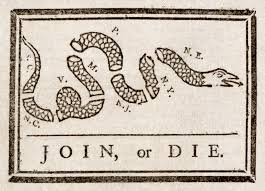Skirmishing
On his march to Chestnut Hill, Cornwallis's column was fired upon by Captain McLane's patrol stationed at Beggar Town (modern Mount Airy). Before falling back, McLane sent a message to Washington, letting him know the British were moving toward Whitemarsh. In retaliation for being fired upon, the British burned yet another house which harbored American riflemen.
The British arrived at Chestnut Hill at dawn. Cornwallis, Lieutenant Colonel Robert Abercrombie of the Light Infantry headed out along the Bethlehem Pike to reconnoiter the American position. They saw countless campfires blazing in the hills. What they didn't know was that Washington had ordered his men to make extra campfires so as to deceive the British as to true troop strength.
Washington sent out General James Irvine and about 600 Pennsylvania militiamen to meet Cornwallis. The Americans fired first and drew heavy return fire from the British. The militiamen were unable to respond to the disciplined reaction from the British platoons. Instead of fighting, they headed for cover. Heavy skirmishing followed which the British got much the better of.
Two musket balls threw General Irvine from his horse. One shot grazed his head, while another took three fingers from his left hand. Dozens of Americans were wounded, killed or captured in the brief engagement. The British loses were light.
While retreating, the Americans were intercepted by a Hessian column who had outflanked them. In a panic, the Americans hightailed it for the hills.
The British marched down Bethlehem Pike to St. Thomas Episcopal church where they encamped. They spent a night in "weather [that] was excessive cold." In the morning, General Howe came to the church to survey the American position. From the church tower, he found the American position which was just half a mile away, to be strongly defended. Even as Howe was looking on, the Americans continuing to fortify their defenses. Howe could also see that the Americans were sending reinforcement to bolster their defenses.
Regardless, Howe decided to probe the enemy with artillery fire. But the shells couldn't reach the American lines. Howe withdrew and decided to try an attack on the American left. On the way, he split his column to form against the American center and left. Howe formed solidly on high ground, but the Americans were on higher ground even still.
For once the American forces controlled the flow of action. On the 6th, when the British shifted toward the center, the Americans fluidly sent extra troops to follow them. Howe, who loved using flanking maneuvers, was unable to do so as the Americans in the hills could see everything he tried to do. In fact, Howe's own flank would have been vulnerable if he tried such a feint.



